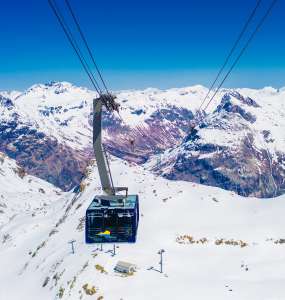Iconic places of the Amalfi Coast
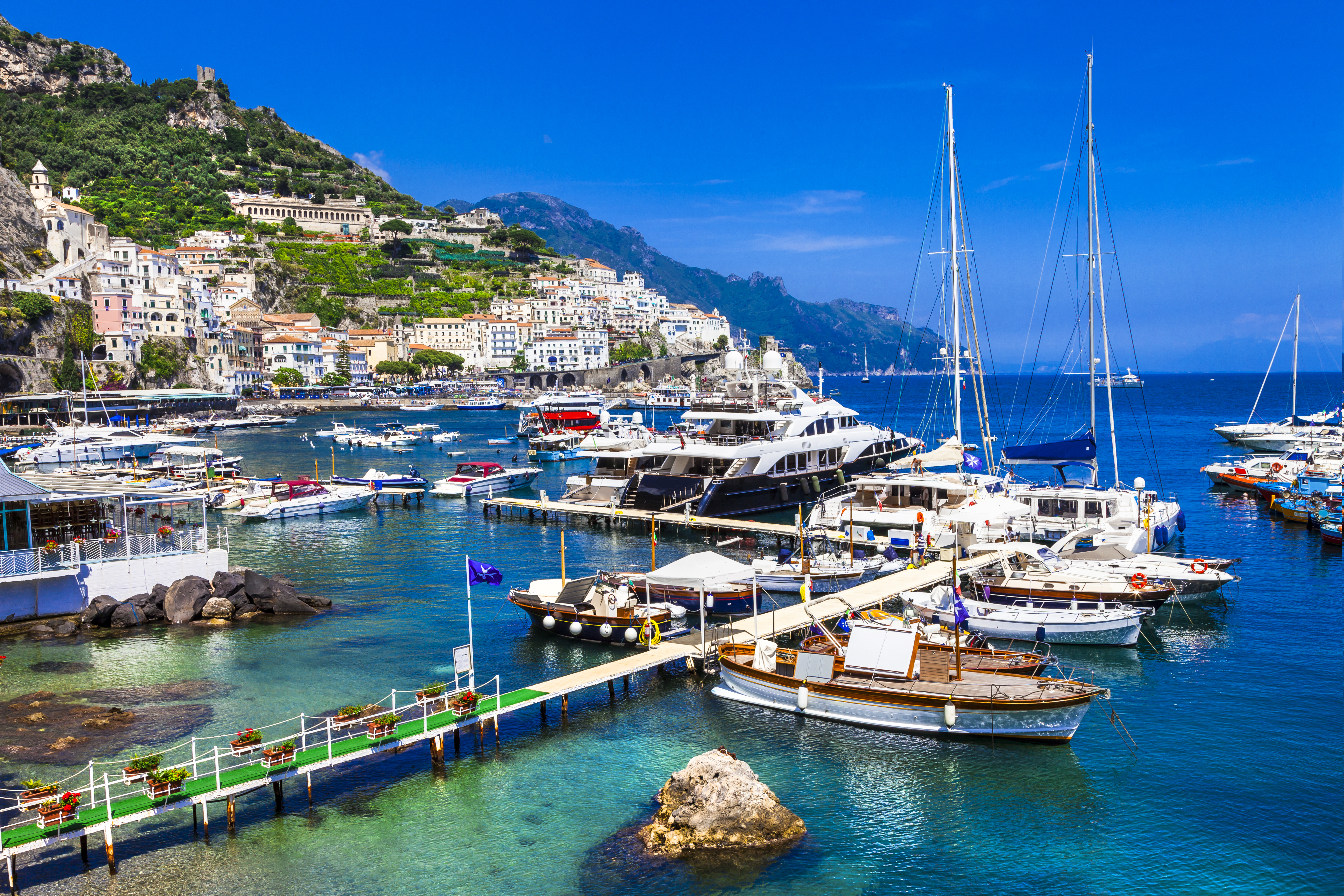
The blooming Amalfi Coast is one of the most attractive in Italy. And the stories of its hotels are no less beautiful and amazing than the views that open up from their terraces.
For many, a trip along the Amalfi Coast begins on the island of Capri, whose first hotel, now known as Hotel La Palma, opened more than two centuries ago a step away from Piazza Umberto I. It is one of the symbols of the island, along with the Gardens of Augustus and the serpentine Via Kruppa, reopened to tourists after a multi-million dollar renovation.
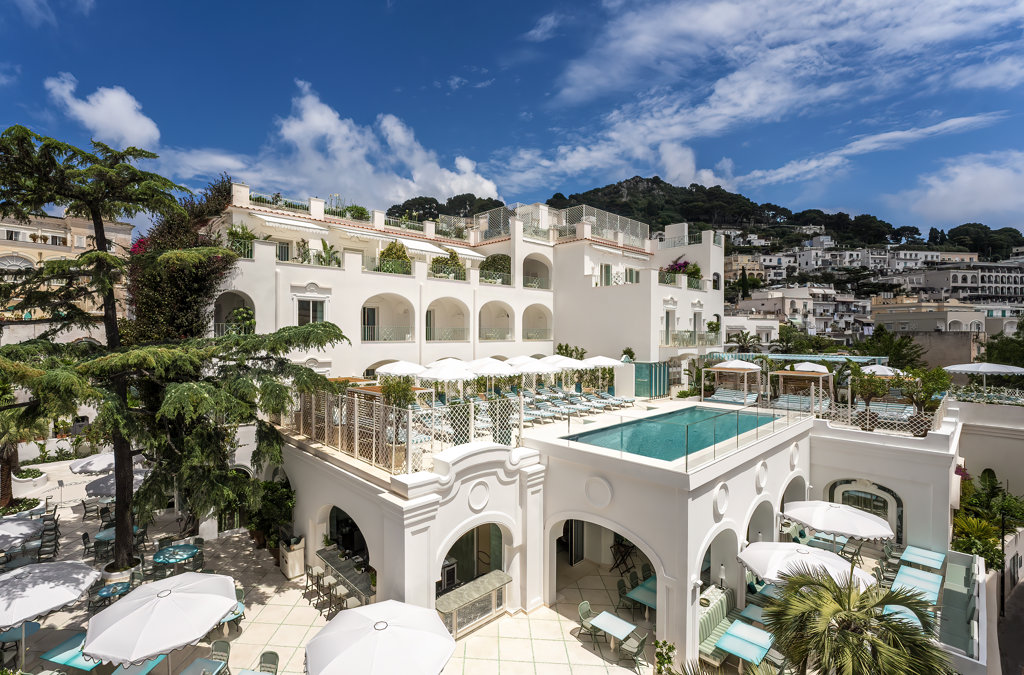
Among the attractions of Capri are the 14th-century Certosa di San Giacomo monastery, which now houses the museum of the German artist Karl Diefenbach, the Barbarossa fortress in Anacapri at an altitude of 412 m above sea level, the majestic Villa Lysis with Ionic columns and a view of Marina Grande.
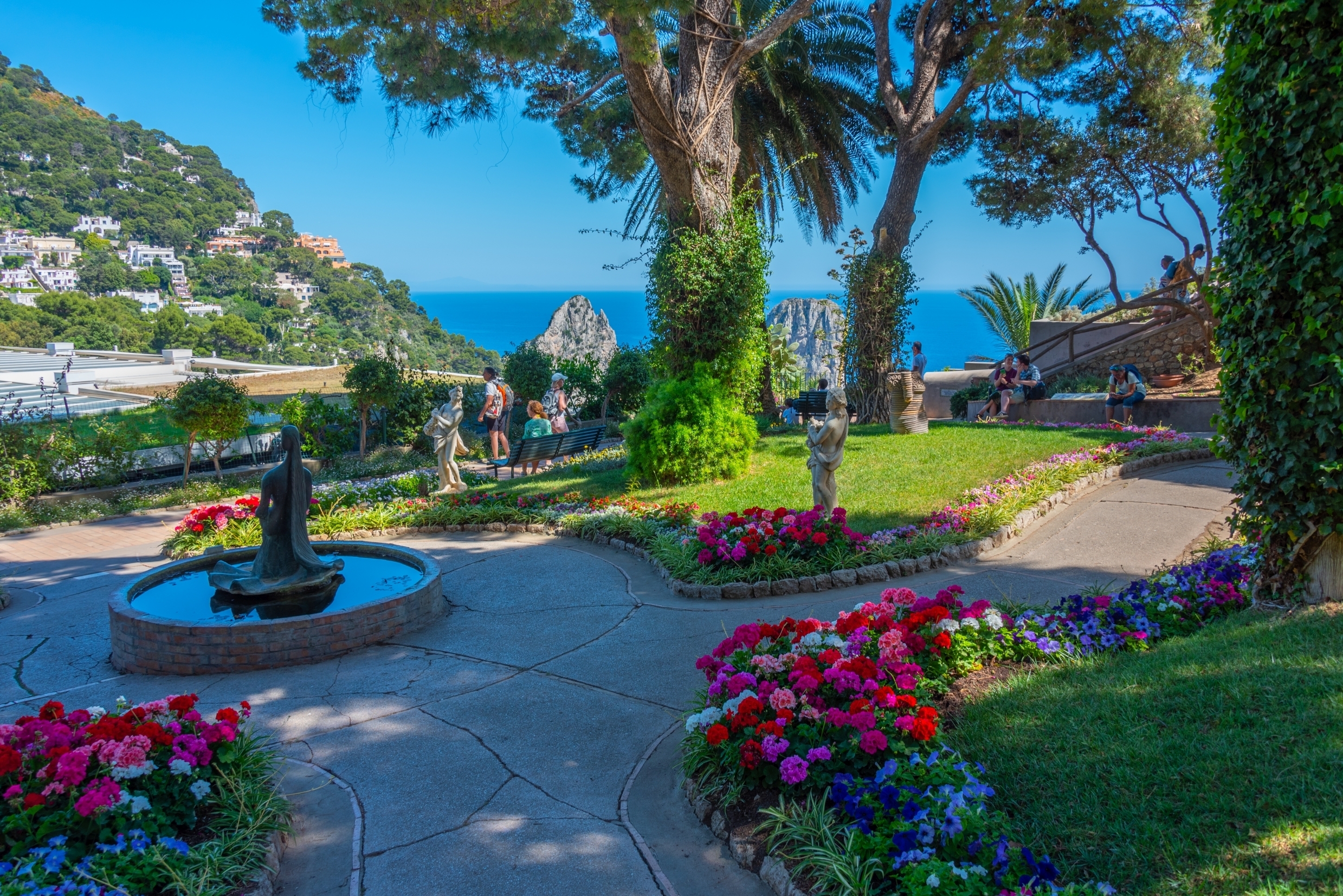
From the time of the Roman Emperor Tiberius, the island has preserved its 12 villas, the largest and most luxurious of which is Villa Jovis, built at an altitude of 330 m between 14 and 37 AD. On a cliff above the bay of Marina Piccola, overlooking the Faraglioni rocks, stands Villa Castiglione, located on the site of one of the villas of Emperor Tiberius, and later a medieval family estate.
Today, it has been completely restored and is available for rent. Moving on to the mainland, in the far west of the Amalfi Coast is the village of Marina del Cantone, where all roads lead to the family restaurant Quattro Passi, awarded three Michelin stars. Its history began 40 years ago with a pizzeria “four steps from the sea” (hence the name of the establishment). We also recommend visiting Lo Scoglio (1958), which impressed Oscar-winning chef Wolfgang Puck. Here, he says, they prepare the best fish and zucchini pasta in the Mediterranean.
In the “vertical city” of Positano, stay at the 3 Michelin Keys* Il San Pietro di Positano with a 17th-century chapel at its entrance. This hotel is a true ode to the sea, which opens up from the rooms, the infinity pool, the yoga terraces and the tennis court, and the Michelin-starred Zass restaurant. Organic vegetables, herbs and fruits are grown on the 10-tiered terraces. And the wine list has more than 600 names. Il San Pietro is the only hotel in Positano with its own beach and beach club. It is reached from the lobby by an elevator cut into the rock.
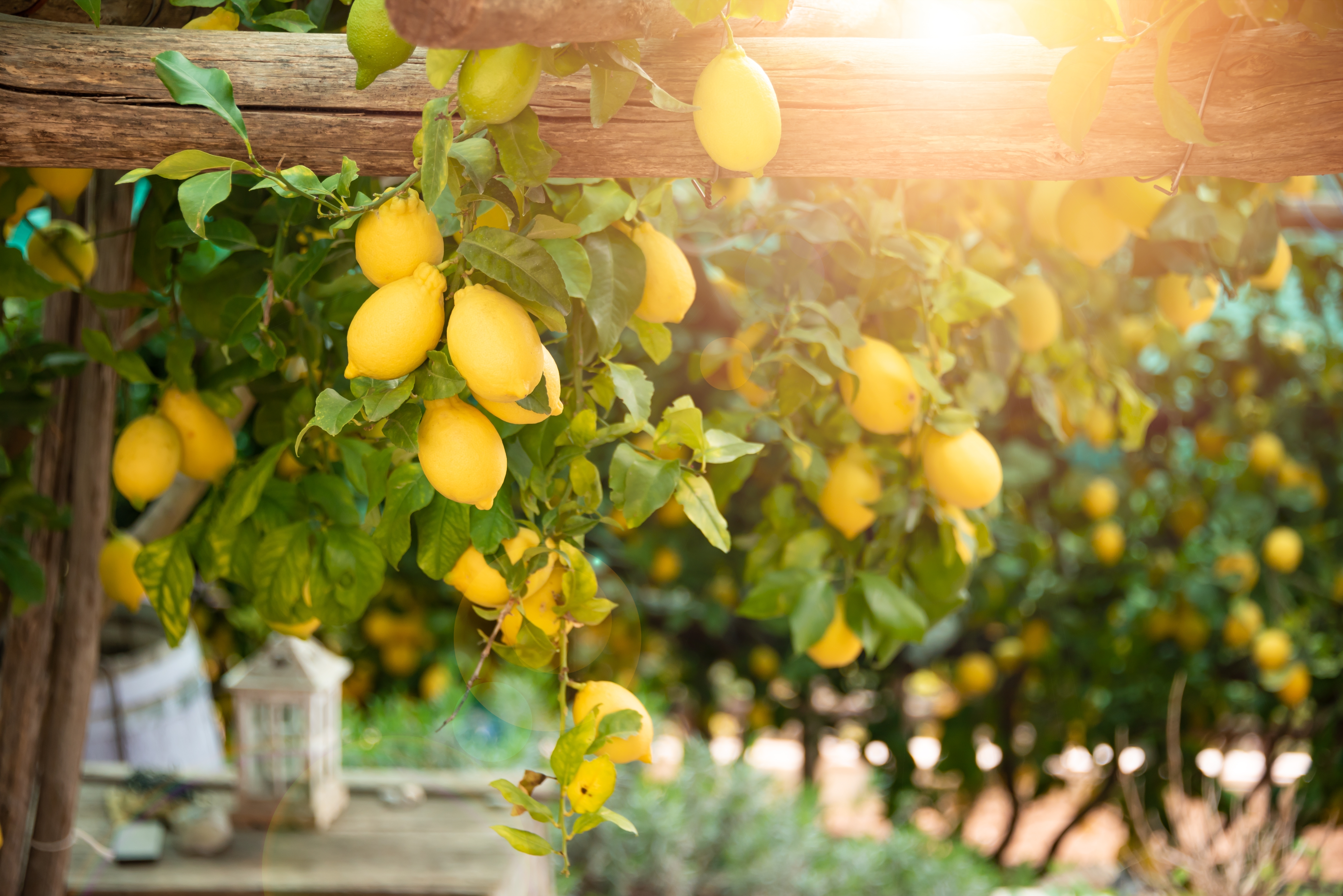
For the best 360-degree panorama, we recommend going up to the roof of the Villa Franca in the Gold Sky Lounge. From here you can see Amalfi, the Punta Campanella Marine Reserve, the picturesque Li Galli archipelago, which is worth including in a yacht or helicopter tour, and the Lattari Mountains behind. The hotel has a Michelin-starred Li Galli restaurant, and a wine cellar with over 1,000 wines from 16 countries.
The best place to relax away from the crowds is Villa Treville, formerly owned by Franco Zeffirelli, who once hosted Coco Chanel, Liza Minnelli, Elizabeth Taylor and Richard Burton. After dark, the terrace of his Maestro’s restaurant takes on a surreal atmosphere, and the hotel’s private garden is as beautiful as a botanical garden.
For non-touristy cuisine and breathtaking views, climb 1,865 steps to the Rifugio Dei Mele restaurant in Nocelle, above Positano. Even in the high season, you can enjoy privacy (and the best sunset views along the coast) in Praiano, on the way from Positano to Amalfi. There, walk to the monastery of San Domenico at an altitude of 364 m above the sea, from where you can see Capri. Try seafood at Da Armandino. Visit the Michelin-starred restaurant Un Piano nel Cielo at the Casa Angelina hotel. Its wine cellar has 600 names, including vintages from the best wineries in Italy.
Taste limoncello at Il Gusto della Costa. Interestingly, lemons were brought to Italy more than a thousand years ago by merchants from the Middle East and crossed with oranges by local farmers. This is how the large, sweet and juicy Amalfi lemon appeared. Today, citrus fruits are grown in terraces on the slopes of the mountains. When harvesting, gardeners overcome thousands of stone steps. Most of the grown grapes are used to make limoncello, and the taste of the liqueur depends on the time of ripening and harvesting of the fruit.
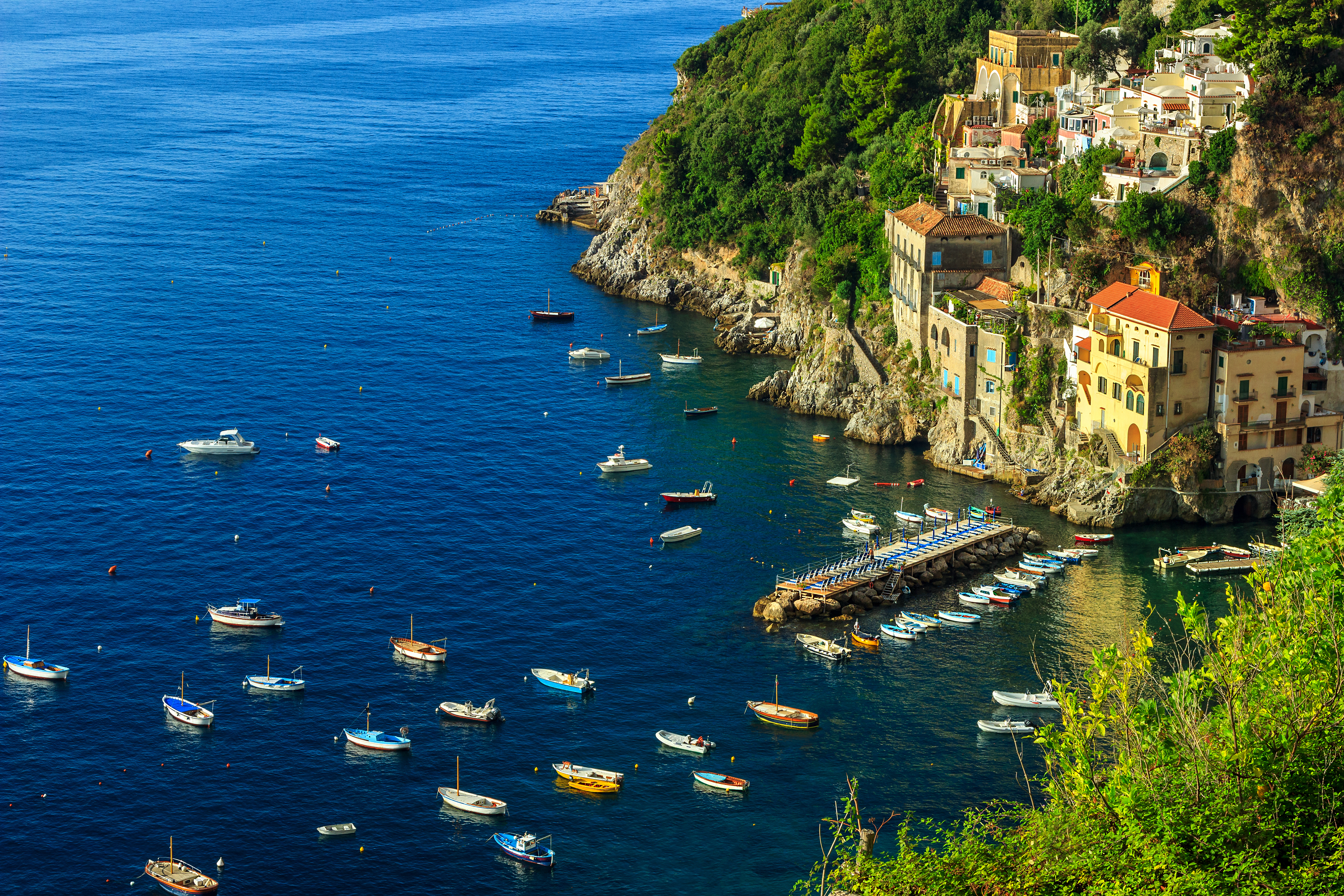
The fishing village of Conca dei Marini was a favorite vacation spot for Princess Margaret, Gianni Agnelli, Jacqueline Kennedy, and Carlo Ponti. Here on the cape there is a 16th-century watchtower, one of thirty defensive structures built along the sea from Positano to Vietri sul Mare.
You can stay in a 17th-century monastery, now one of the best hotels on the Amalfi Coast – Monastero Santa Rosa Hotel & Spa on a high cliff above the sea, with terraced gardens and an impressive infinity pool. The former cells have been converted into 20 rooms. The Il Refettorio restaurant (Michelin star) is run by Alfonso Crescenzo. The local spa is one of the largest on the coast, with a thermal complex and treatments based on products from the world's oldest pharmacy, Officina Profumo – Farmaceutica di Santa Maria Novella.
.jpg)
Amalfi, in addition to luxury hotels and star restaurants, is also one of the first places in Europe where, in the thirteenth century, thanks to trade with the countries of the East, they began to produce cotton and linen paper. This craft came to them from China. Since the 15th century, the Armatruda family dynasty has been producing paper in Amalfi. Their enterprise Cartiera Armatruda in the Valley of the Mills is the only one in the city that has survived to this day and continues to operate despite the fact that out of 16 mills, only one remains. All production, as in previous centuries, is carried out by hand. Such paper is valued all over the world, it is used for wedding invitations, business cards, canvases. They also produce paper with flowers collected in the valley near the mill. Along with this factory, you can also visit the Paper Museum with a working mill from the 13th century.
Stay at Borgo Santandrea, with its own private beach, beach club and star chef Crescenzo Scotti’s Alici restaurant, or at the family-run Hotel Santa Caterina, dating back to 1904, with its Michelin-starred fine dining restaurant Glicine.
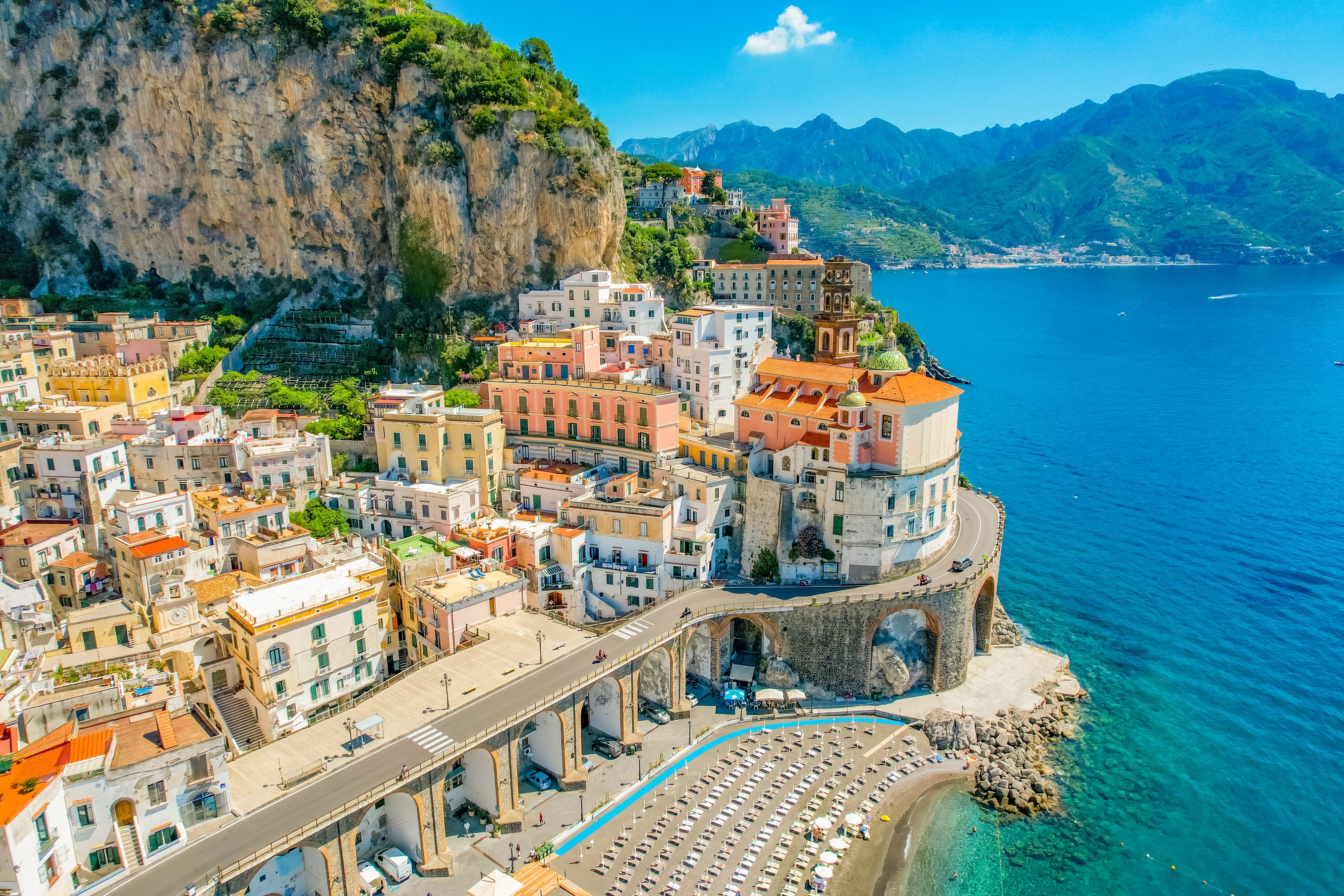
Less than 10 minutes’ walk east of Amalfi, Atrani is a quiet place to enjoy the views. Atrani is the smallest of the 362 “Most Beautiful Villages in Italy”, which also include Furore and Conca dei Marini. Interest in Atrani is also fuelled by the fact that it was the location for the new thriller Ripley (now on Netflix). Atrani is easily recognizable by the ancient staircase and viaduct where the beach meets the central Piazza Umberto I, dominated by the 10th-century Church of San Savior, where the doges were once crowned. During a night yacht cruise, Atrani, lit by lanterns, is transformed into a fairy-tale town. Fishing boats bob off the coast. They also deliver the catch of the day to the coastal restaurants, which are a must-see.
Ravello is famous for its festival of the same name, which takes place on the panoramic terrace of Villa Rufolo, immortalized in Boccaccio's Decameron. The modern look of its gardens is the brainchild of Scottish botanist Francis Neville Reid, who purchased the villa in 1851 and filled the two-tiered garden with exotic and local species. The pride of the town is the concert hall of Oscar Niemeyer, a famous Brazilian architect who designed more than 600 buildings around the world. It is also interesting to visit the Coral Museum.

One of the best hotels in Ravello is the Hotel Villa Cimbrone, located on the territory of a 12th-century villa. At the beginning of the 20th century, the British banker Ernest William Beckett and the Baroness, writer and gardener Vita Sackville-West created gardens here that are considered an example of English landscape design in southern Europe. To visit them, you don’t have to be a guest at the hotel: they are open to everyone. The American writer Gore Vidal, who lived in Ravello for a long time, described the panorama of the Gulf of Salerno that opens up from the belvedere in these gardens as the most beautiful thing he had seen in the world. The villa’s Il Flauto di Pan restaurant has been awarded a Michelin star. Rossellinis, another Michelin-starred restaurant, is located in the Palazzo Avino hotel.
The 11th-century villa, the highest point in Ravello, is home to the magnificent Caruso, a Belmond Hotel with one Michelin key, surrounded by centuries-old gardens with rose bushes and aromatic herbs. This is one of the best spa hotels in Italy, with a superb heated infinity pool and the private Villa Margherita – ideal for a honeymoon or a secluded family holiday.
On a cliff above the sea in Maiori stands the Mezzacapo Castle, also known as the Miramare Castle, from the late 19th century, which is no less beautiful and grand than the castles of the Loire. And this comparison is no accident: the idea to build a castle in Maiori came to the Marquis of Mezzacapo during a trip along the Loire. Stunning views also open up from the thousand-year-old fortress of San Nicola, which is reached by 700 steps. But the main attraction of Maiori is its kilometre-long beach, the longest on the coast. A 500-year-old Norman tower rises above the sea, where the Torre Normanna restaurant is now open, with exclusive sparkling wines from Champagne and white and red wines from grapes grown on its own estate near Ravello. It is also worth visiting the Faro di Capo d’Orso restaurant, which has more than a thousand wines on its list. And it is better to stay at the five-star Hotel Botanico San Lazzaro with a beach club, a botanical garden full of exotic species (there are more than 2 thousand of them), and an innovative spa.
.jpg)
In Vietri sul Mare, it is interesting to visit the family pottery factory Solimene, opened in 1947. Its bizarre facades are worthy of the works of Gaudi, and this is the only European project of the Italian-American architect Paolo Soleri. In 2004, the building was awarded the title of a cultural and landscape heritage site of national importance. Also worth visiting is the Volta del Fuenti by Michele De Blasio with a Michelin star.

